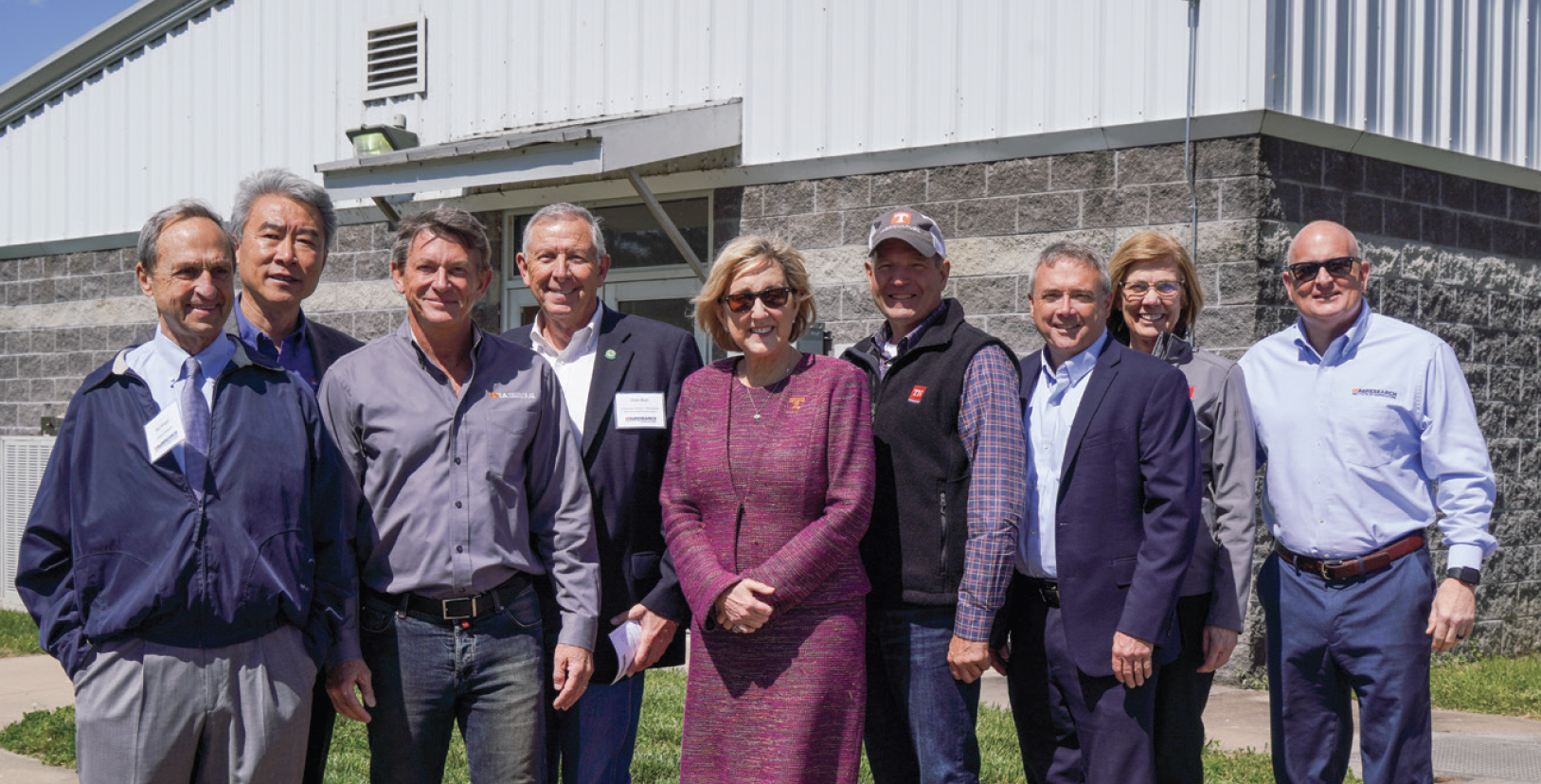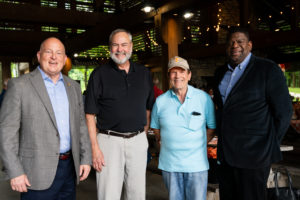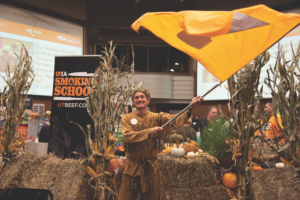
Robotic Milkers and Precision Livestock Farming on Display
Some very special dignitaries ushered in a new era of dairy research at UTIA on May 2 at a ribbon cutting and demonstration of UT AgResearch’s new robotic milking technology. Installed at the East Tennessee AgResearch and Education Center’s Little River Animal and Environmental Unit, the new system allows cows to be automatically milked at their own will.
The cows that will use the robotic milkers were the stars of the event, with one “cutting” a Big Orange ribbon to open the facility to the delight of UT officials, industry and government representatives, as well as about a hundred persons in attendance, including UT students, faculty, and staff.
The “ribbon cutting” cow and many others like her are trained to walk up to the robotic system, where each animal will be recognized through a sensor on her collar. The system then knows how much feed to give the cow while she’s being milked, based on historical data. The cow is free to eat, drink, and rest while being milked, and in an area where there is less cattle traffic. About 120 dairy cows can be milked on the system developed by the Lely Corporation in the Netherlands, and performance records will be kept for each animal.
UT scientists will observe many different aspects of dairy cattle performance, including milk production, feeding data, measurements of cow comfort, and more.

Attendees who spoke at the event praised the university’s dairy research and Extension efforts, as well as the land-grant mission. Speakers included Randy Boyd, UT System president; Donde Plowman, UT Knoxville chancellor; Keith Carver, senior vice chancellor and senior vice president for UTIA; Charlie Hatcher, Tennessee commissioner of agriculture; and Stan Butt, executive director of the Tennessee Dairy Producers Association. Following the ribbon cutting, the speakers and crowd toured the facility.
“The mission of UT AgResearch is to conduct leading-edge projects to serve the evolving needs of the agriculture and forestry industry in Tennessee and beyond,” says Hongwei Xin, dean of UT AgResearch, who served as emcee for the event. “The introduction of milking robots into our existing traditional dairy production system at the Little River dairy facility allows our researchers to find answers to questions ranging from interactions between the animals and robots, impact on the animal’s production performance, labor savings, and profitability.”
The robotic milking system is part of the UT Precision Livestock Farming program (plf.tennessee.edu), which aims to improve production efficiency and food supply chain robustness through enhanced animal welfare and automation. UTIA is poised to be the leader in this type of production in the region, the nation, and the world, says Xin. Three weeks after the milking system’s debut, the university hosted the second national conference focused on precision livestock farming research and production techniques (tiny.utk.edu/usplf2023).
Already one of the highest-tech dairy facilities in the state, the Little River Unit is a 529-acre tract that provides land, equipment, livestock, and support for UTIA’s research and teaching efforts. The primary emphasis of the unit is Holstein cow milking and production research, as well as extensive studies that evaluate the interaction between animal agriculture and the environment. The unit also includes 200 acres of production cropland and 100 acres of pasture.
Explore More on
Features
MORE FROM THIS ISSUE


















